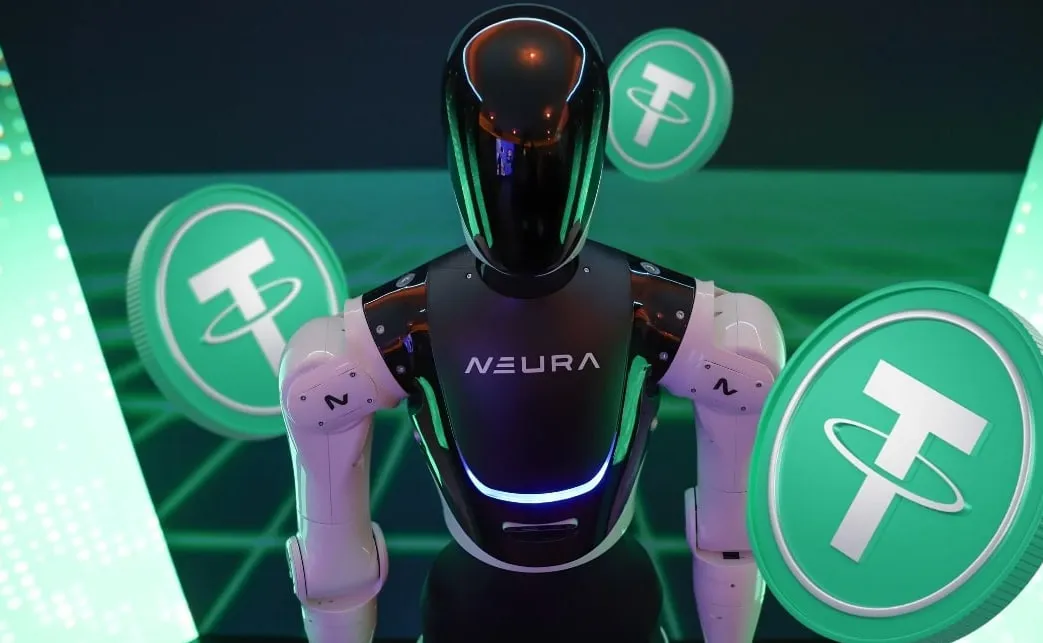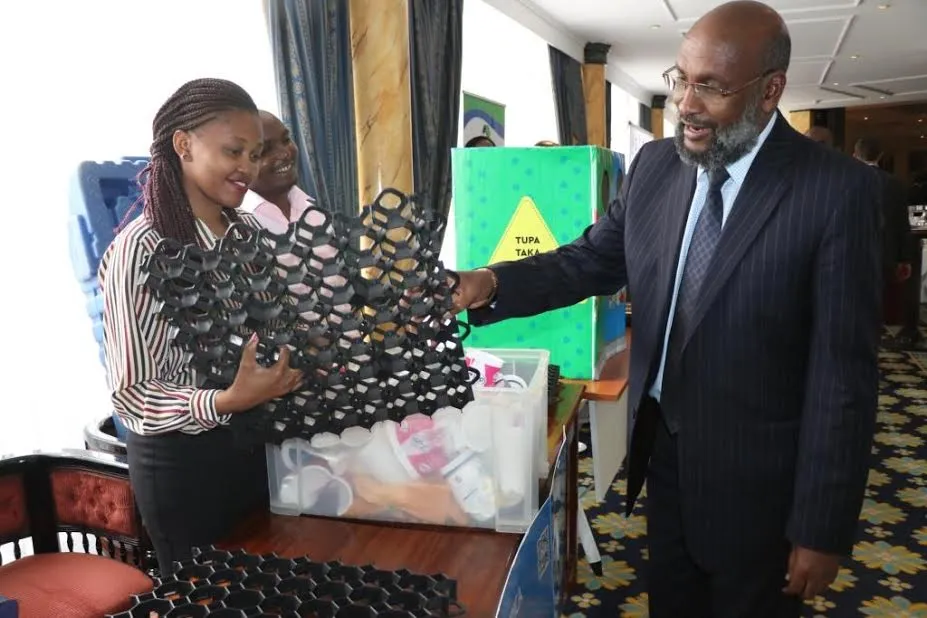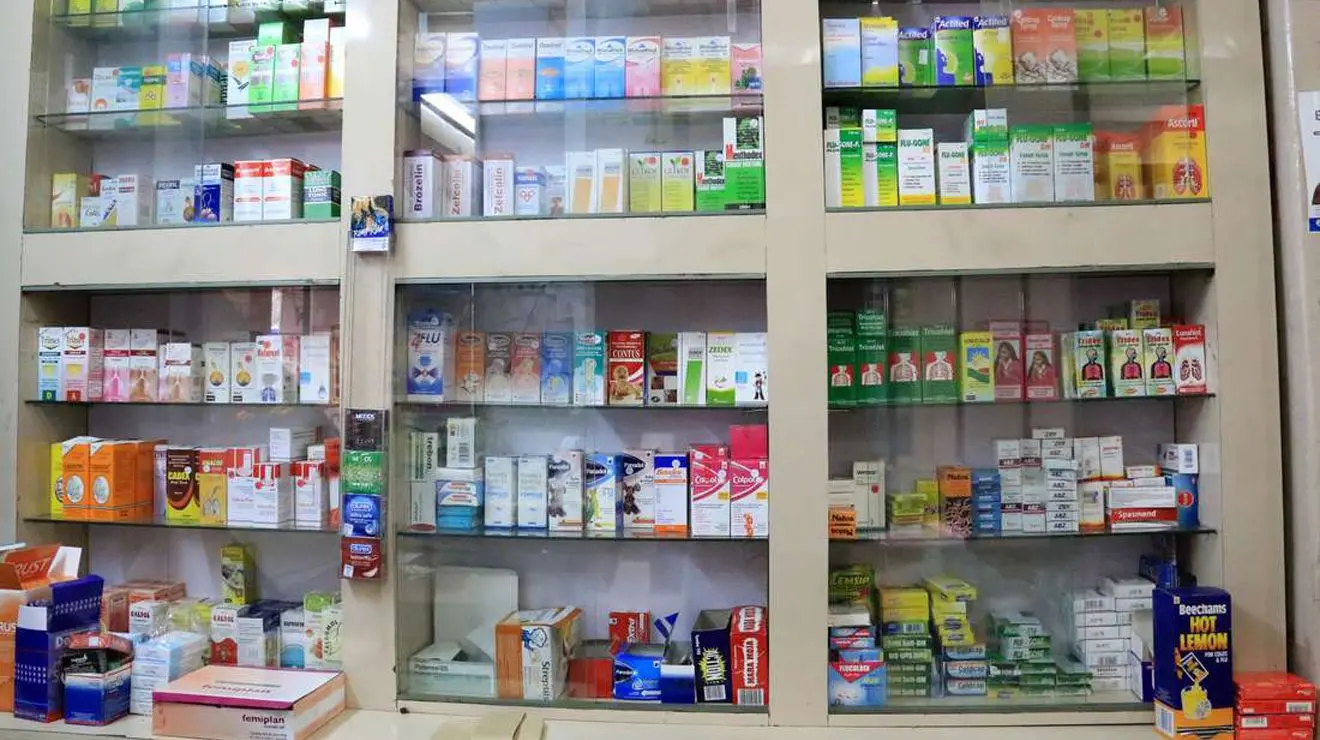In a move that signals the cryptocurrency industry’s most ambitious diversification effort to date, Tether Holdings is in advanced discussions to lead a €1 billion (approximately $1.15 billion) funding round for Neura Robotics, a German startup developing AI-powered humanoid robots. If finalized, the deal would value Neura between €8 billion and €10 billion, representing one of the largest private investment rounds in the European robotics sector and marking a dramatic pivot for the world’s largest stablecoin issuer beyond its traditional digital finance operations.
The potential investment, first reported by the Financial Times citing sources familiar with the matter, would represent a sharp rise from Neura’s last funding round in January 2025, when the company raised €120 million. The deal underscores how cryptocurrency firms flush with unprecedented profits are increasingly looking beyond digital assets to position themselves at the forefront of emerging technologies that could reshape entire industries.
Tether’s Transformation: From Stablecoin Giant to Technology Investor
Tether, the company behind USDT—the world’s largest stablecoin with over $184 billion in circulation—has undergone a remarkable transformation from a purely cryptocurrency-focused operation to a diversified technology investor. The company’s expansion into AI robotics represents its most significant departure yet from its core stablecoin business.
The timing of Tether’s aggressive diversification strategy reflects the company’s extraordinary financial position. According to Tether’s Q3 attestation report, the firm generated net profits exceeding $10 billion through the first three quarters of 2025 alone. This builds upon the company’s $13.4 billion profit recorded in 2024, making Tether one of the most profitable companies globally on a per-employee basis.
These massive profits stem primarily from interest earned on U.S. Treasury bills and other short-term money-market instruments that back Tether’s stablecoin reserves. With yields on safe government debt remaining elevated, Tether has accumulated vast reserves that it is now strategically deploying across multiple frontier technology sectors.
While Tether did not officially confirm the Neura negotiations to media outlets, the company stated it is “actively exploring numerous opportunities to continue investing in frontier tech”—a statement that aligns with CEO Paolo Ardoino’s publicly expressed enthusiasm for artificial intelligence, robotics, and decentralized technology infrastructure.
Understanding Neura Robotics: The “iPhone Moment” for Robotics
Founded in 2019 by David Reger in Metzingen, Germany, Neura Robotics has positioned itself as a pioneer in “cognitive robotics”—machines capable of perceiving their surroundings independently, making autonomous decisions, and learning from experience. The company’s ambitious vision centers on creating what Reger has described as an “iPhone moment” for the robotics industry, analogous to how Apple’s smartphone revolutionized mobile computing.
Neura’s flagship product is the 4NE-1 humanoid robot, pronounced “For Anyone,” designed for industrial applications with planned expansion into home environments. The third-generation version of this humanoid stands 180 centimeters tall, can lift payloads up to 100 kilograms, and features an intelligent dual-battery system enabling uninterrupted 24/7 operation. The 50-kilogram machine can move at speeds up to 5 kilometers per hour and incorporates a sensitive “artificial skin” that detects touches before actual contact occurs, making human-robot interaction both safer and more precise.
The company has publicly committed to an extraordinarily ambitious production target: manufacturing and delivering 5 million robots by 2030. This goal encompasses robots for industrial applications, service sectors, and residential use—a scale of deployment that would make Neura one of the largest robotics manufacturers globally if achieved.
According to statements from Neura, the company has already secured approximately €1 billion in pre-orders, demonstrating substantial commercial interest in its products. This order book provides concrete validation of market demand beyond venture capital enthusiasm and suggests that Neura’s ambitious production targets may have a realistic foundation.
The Technical Edge: What Makes Neura’s Robots “Cognitive”
Neura distinguishes its products through what it terms “cognitive” capabilities—functionality that goes beyond traditional industrial robots that follow pre-programmed routines. The company’s robots operate without protective cages and can work safely alongside humans in dynamic, unpredictable environments.
At the core of Neura’s technological advantage is its patented Omnisensor technology, combined with seven integrated cameras that enable the 4NE-1 to reliably distinguish people from objects, recognize individuals, and adapt behavior accordingly for direct collaboration. This sensory system allows the robots to navigate complex real-world environments with a level of situational awareness approaching human capabilities.
The humanoid features conversational AI capabilities, integrated speakers and microphones for natural voice commands, and hands capable of learning fine motor tasks. These features position the robot for diverse applications ranging from complex industrial assembly to household chores and service-sector duties.
To enable the rapid, automated production necessary to meet its ambitious volume targets, Neura has developed an innovative manufacturing method called “Neura Hive”. In this system, multiple robots arranged in a circle collaboratively assemble humanoid components in a confined space—essentially using robots to build robots at scale. Neura claims this production approach makes humanoid robotics economically scalable for the first time.
The company has also created the Neuraverse, an open ecosystem that connects robots and allows easy development and deployment of applications through an app store-like marketplace. This platform approach mirrors successful technology business models and could create network effects as more developers build applications for Neura’s hardware.
Strategic Rationale: Why Tether Is Betting on Humanoid Robots
Tether’s potential investment in Neura represents both a financial opportunity and strategic positioning for the future of automation and artificial intelligence. Several factors make this investment compelling from Tether’s perspective.
First, the robotics and AI sector represents what Nvidia CEO Jensen Huang has described as a “multitrillion-dollar opportunity”. As labor shortages intensify across developed economies and the cost of advanced sensors and AI compute continues declining, the economic case for deploying humanoid robots in factories, warehouses, healthcare facilities, and eventually homes strengthens considerably.
Second, by backing Neura at this stage, Tether gains early access to a sector that could fundamentally reshape labor markets and industrial efficiency. If cognitive robotics achieves even a fraction of its projected potential, early investors in successful companies will reap outsized returns.
Third, the investment allows Tether to demonstrate to regulators and skeptics that its enormous profits are being reinvested in productive, tangible assets rather than speculative cryptocurrency ventures. This positioning could prove valuable as global regulators continue scrutinizing stablecoin operations and their systemic importance to financial markets.
Fourth, there are potential synergies between Tether’s blockchain expertise and the robotics sector. As CEO Paolo Ardoino has emphasized through initiatives like Tether AI, the company sees opportunities to integrate decentralized AI networks with cryptocurrency payment systems, potentially creating new use cases for both technologies.
Tether’s Broader Diversification Portfolio
The Neura investment would add to approximately 140 companies that Tether already backs as part of its aggressive diversification strategy. The company’s portfolio now spans sectors far removed from traditional cryptocurrency operations, including:
AI and Technology: Beyond Neura, Tether has backed various AI infrastructure projects and secured access to a 20,000-GPU compute network to build its AI research environment. The company’s internal “Tether AI” initiative focuses on developing open-source, peer-to-peer machine learning technologies.
Energy and Commodities: Tether has deployed approximately $1.5 billion in commodity trade lending, offering credit across oil, cotton, wheat, and other agricultural markets. This move positions Tether to compete directly with traditional banks in trade finance.
Precious Metals: The company has accumulated gold reserves exceeding $12 billion, alongside its Bitcoin holdings, diversifying its treasury beyond fiat-backed instruments.
Media and Communications: Tether has increased its investment in video-sharing platform Rumble and explored partnerships across the communications technology sector.
Financial Infrastructure: Through its “Hadron by Tether” platform, the company has signed agreements with KraneShares and Bitfinex Securities to accelerate adoption of tokenized securities, bridging traditional finance with blockchain technology.
This diversification reflects Tether’s transformation from a single-product stablecoin issuer into what increasingly resembles a technology-focused investment holding company with massive capital deployment capabilities.
Competitive Landscape: Neura Versus Global Robotics Giants
Neura’s ambitions place it in direct competition with some of the world’s most formidable technology companies. Tesla aims to produce 1 million Optimus robots by 2030—a target comparable in scale to Neura’s 5 million unit goal, though Tesla’s timeline is slightly more conservative.
Other well-funded competitors include Figure AI, 1X Technologies, The Bot Company, and Chinese manufacturers like Unitree Robotics. Each brings different strengths: Tesla leverages its manufacturing expertise and AI capabilities developed for autonomous vehicles; Figure AI has attracted backing from major tech investors; Chinese competitors benefit from lower production costs and government support.
However, Neura claims several competitive advantages. As CEO David Reger stated, “NEURA is the only company worldwide that designs and manufactures intelligent, cognitive robots in-house”. This vertical integration—controlling hardware design, sensor systems, AI software, and manufacturing—mirrors strategies that have proven successful in consumer electronics.
The company has also established strategic partnerships with established industrial players. White-label agreements with Kawasaki Robotics, Delta Electronics, Omron, and other leading manufacturers provide distribution channels and industrial credibility. Additionally, collaborations with Nvidia, SAP, Schaeffler, and Vodafone bring complementary capabilities in AI compute, enterprise software, industrial components, and connectivity.
Neura’s decision to relocate production from China to Germany in January 2025 reflects both a commitment to European manufacturing and a response to supply chain vulnerabilities exposed during recent geopolitical tensions. While this increases production costs, it aligns with European policy priorities around technological sovereignty and could provide advantages in serving European markets.
Market Opportunity and Industry Dynamics
The humanoid robotics sector is experiencing a surge of interest driven by converging technological and economic factors. Advances in machine learning, computer vision, and edge computing have dramatically improved robots’ ability to understand and react to their surroundings. Simultaneously, persistent labor shortages in manufacturing, logistics, healthcare, and service industries are making automation economically compelling even at relatively high per-unit costs.
Analysts project the humanoid robotics market could exceed $150 billion by 2035, with applications ranging from factory work to elderly care. This growth trajectory reflects expectations that humanoid robots will transition from experimental prototypes to commercially viable products over the next decade.
The market opportunity extends beyond manufacturing. Aging populations in developed economies face growing care needs that cannot be met by human workers alone. Robots capable of assisting with daily living tasks—helping people dress, prepare meals, or maintain their homes—could address critical social needs while creating massive new markets.
In service industries, labor shortages have reached crisis levels in many sectors. Restaurants, hotels, retail stores, and warehouses struggle to find and retain workers willing to perform repetitive tasks. Cognitive robots that can safely work alongside humans and adapt to changing circumstances could fill these gaps more effectively than traditional fixed-function automation.
Risks and Challenges Facing the Investment
Despite the excitement surrounding Tether’s potential Neura investment, significant risks warrant careful consideration. The humanoid robotics sector remains nascent, with few companies having successfully scaled production beyond experimental quantities.
Technical Execution: Building reliable robots capable of safely operating in unpredictable human environments represents an enormous engineering challenge. Even minor technical failures could have serious safety implications, potentially exposing Neura to liability and reputational damage.
Manufacturing Scale: Producing 5 million sophisticated humanoid robots by 2030 requires solving complex supply chain, quality control, and manufacturing challenges. The specialized components, sensors, and actuators needed for cognitive robots face potential bottlenecks as multiple competitors race to scale simultaneously.
Market Adoption: While Neura has secured €1 billion in pre-orders, converting early commercial interest into sustained market acceptance remains uncertain. Enterprise customers are typically conservative about adopting unproven technologies for critical operations.
Regulatory Hurdles: As humanoid robots become more capable and autonomous, regulatory frameworks will inevitably evolve. Safety standards, liability regimes, and employment regulations could significantly impact the economics and viability of widespread robot deployment.
Competition: Well-funded competitors with deeper resources and established market positions pose substantial threats. Tesla’s brand recognition, manufacturing expertise, and AI capabilities make it a formidable competitor. Chinese manufacturers benefit from lower costs and supportive government policies.
Capital Intensity: Robotics requires massive ongoing capital investment in R&D, manufacturing capacity, and market development. Even with Tether’s backing, Neura will likely need multiple subsequent funding rounds to achieve its ambitious targets.
For Tether specifically, the investment represents a significant departure from its core competencies. While the company has demonstrated financial management expertise, successfully scaling a hardware manufacturing business requires entirely different capabilities. If the investment underperforms, it could raise questions about Tether’s diversification strategy and capital allocation decisions.
Implications for Cryptocurrency and Tech Industries
The Tether-Neura deal, if consummated, carries implications extending well beyond the two companies directly involved. It potentially signals a new era in which cryptocurrency firms leverage their accumulated capital to become major players in emerging technology sectors.
Other cryptocurrency companies with substantial reserves may view Tether’s move as validation of aggressive diversification strategies. Companies like Circle (issuer of USDC stablecoin), Binance, Coinbase, and others could follow suit with their own strategic technology investments, creating a new class of crypto-native investment firms competing with traditional venture capital and corporate venture arms.
For the robotics industry, the injection of cryptocurrency capital could accelerate development timelines and enable more ambitious projects. Crypto firms typically operate with longer time horizons and higher risk tolerance than traditional investors, potentially supporting technologies that require extended development periods.
The deal also illustrates the growing convergence between blockchain technology and artificial intelligence. As Tether CEO Paolo Ardoino has emphasized through initiatives like Tether AI, opportunities exist to integrate decentralized networks with machine learning systems, potentially creating more resilient and privacy-preserving AI infrastructure.
Regulatory and Geopolitical Considerations
Tether’s expansion into AI robotics occurs against a backdrop of increasing regulatory scrutiny of both stablecoin issuers and artificial intelligence development. The company’s ability to deploy billions in profits from stablecoin operations into strategic technology investments may attract attention from regulators concerned about concentration of financial power and systemic risk.
European regulators, in particular, have expressed interest in maintaining technological sovereignty and preventing excessive dependence on American or Chinese technology companies. Tether’s investment in a German robotics firm aligns with these policy priorities and could be viewed favorably by European officials seeking to support regional technology champions.
However, Tether’s own regulatory status remains complex. While the company has taken steps to increase transparency, including regular attestation reports, critics continue questioning aspects of its operations and reserve management. Major investments in frontier technologies could either bolster Tether’s reputation as a responsible, forward-looking company or invite additional scrutiny of how it manages its vast reserves.
Future Outlook and Timeline
Neither Tether nor Neura has officially confirmed the investment terms or timeline, and negotiations could still fall through or result in significantly different deal structures. According to reports, Morgan Stanley is advising on the transaction, suggesting a high level of sophistication and due diligence in the process.
If finalized as reported, the investment would likely close in late 2025 or early 2026, providing Neura with substantial resources to accelerate its production ramp-up and market development efforts. The company would face critical milestones over subsequent years:
2026: Demonstrating manufacturing scalability and achieving initial commercial deployments in industrial settings
2027-2028: Expanding production volumes and beginning to penetrate service sector markets
2029-2030: Ramping toward the 5 million unit production target and potentially launching consumer-oriented products
Throughout this timeline, Neura will need to execute flawlessly on technology development, manufacturing, supply chain management, and market development—a daunting challenge even with Tether’s substantial backing.
Conclusion: A Defining Moment for Crypto Diversification
Tether’s potential $1.15 billion investment in Neura Robotics represents a watershed moment in the cryptocurrency industry’s evolution. It demonstrates how companies that initially focused purely on digital finance are now deploying their accumulated capital to position themselves at the forefront of transformative physical technologies.
For Neura, Tether’s backing would provide not just capital but also credibility and potentially access to new markets and partnerships. The German robotics firm would gain a well-resourced partner as it attempts to execute one of the most ambitious manufacturing scale-ups in the robotics sector.
For the broader technology ecosystem, the deal illustrates how lines between cryptocurrency, artificial intelligence, and robotics are increasingly blurring. The next generation of technology giants may emerge from unexpected places, with crypto-native companies leveraging their financial resources to build positions in hardware, AI, and other frontier technologies.
Whether this particular investment succeeds or not, it signals that cryptocurrency companies are no longer content to remain purely digital. They are increasingly seeking to apply their capital and technological expertise to reshape the physical world—a transformation that could have profound implications for industries from manufacturing to healthcare to everyday domestic life.
As David Reger stated, “Cognitive robotics is the next technological revolution—and it is happening right here, right now.” If Tether’s investment proceeds as reported, the world’s largest stablecoin issuer will be betting over a billion dollars that this revolution is worth backing—and that cryptocurrency profits can help bring it to fruition.
Article, Financial and News Disclaimer
The Value of a Financial Advisor
While this article offers valuable insights, it is essential to recognize that personal finance can be highly complex and unique to each individual. A financial advisor provides professional expertise and personalized guidance to help you make well-informed decisions tailored to your specific circumstances and goals.
Beyond offering knowledge, a financial advisor serves as a trusted partner to help you stay disciplined, avoid common pitfalls, and remain focused on your long-term objectives. Their perspective and experience can complement your own efforts, enhancing your financial well-being and ensuring a more confident approach to managing your finances.
Disclaimer: This article is for informational purposes only and does not constitute financial advice. Readers are encouraged to consult a licensed financial advisor to obtain guidance specific to their financial situation.
Article and News Disclaimer
The information provided on www.serrarigroup.com is for general informational purposes only. While we strive to keep the information up to date and accurate, we make no representations or warranties of any kind, express or implied, about the completeness, accuracy, reliability, suitability, or availability with respect to the website or the information, products, services, or related graphics contained on the website for any purpose. Any reliance you place on such information is therefore strictly at your own risk.
www.serrarigroup.com is not responsible for any errors or omissions, or for the results obtained from the use of this information. All information on the website is provided on an as-is basis, with no guarantee of completeness, accuracy, timeliness, or of the results obtained from the use of this information, and without warranty of any kind, express or implied, including but not limited to warranties of performance, merchantability, and fitness for a particular purpose.
In no event will www.serrarigroup.com be liable to you or anyone else for any decision made or action taken in reliance on the information provided on the website or for any consequential, special, or similar damages, even if advised of the possibility of such damages.
The articles, news, and information presented on www.serrarigroup.com reflect the opinions of the respective authors and contributors and do not necessarily represent the views of the website or its management. Any views or opinions expressed are solely those of the individual authors and do not represent the website's views or opinions as a whole.
The content on www.serrarigroup.com may include links to external websites, which are provided for convenience and informational purposes only. We have no control over the nature, content, and availability of those sites. The inclusion of any links does not necessarily imply a recommendation or endorsement of the views expressed within them.
Every effort is made to keep the website up and running smoothly. However, www.serrarigroup.com takes no responsibility for, and will not be liable for, the website being temporarily unavailable due to technical issues beyond our control.
Please note that laws, regulations, and information can change rapidly, and we advise you to conduct further research and seek professional advice when necessary.
By using www.serrarigroup.com, you agree to this disclaimer and its terms. If you do not agree with this disclaimer, please do not use the website.
www.serrarigroup.com, reserves the right to update, modify, or remove any part of this disclaimer without prior notice. It is your responsibility to review this disclaimer periodically for changes.
Serrari Group 2025












